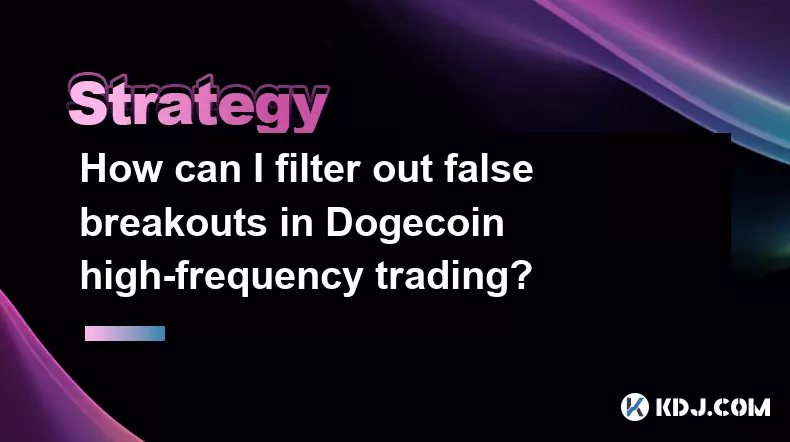-
 bitcoin
bitcoin $112195.049338 USD
2.42% -
 ethereum
ethereum $4124.915858 USD
2.81% -
 tether
tether $1.000570 USD
0.02% -
 xrp
xrp $2.861568 USD
2.25% -
 bnb
bnb $1000.346670 USD
3.04% -
 solana
solana $209.070819 USD
3.38% -
 usd-coin
usd-coin $0.999870 USD
0.02% -
 dogecoin
dogecoin $0.235379 USD
2.65% -
 tron
tron $0.335681 USD
-0.20% -
 cardano
cardano $0.803501 USD
3.38% -
 hyperliquid
hyperliquid $47.120881 USD
3.56% -
 chainlink
chainlink $21.501300 USD
3.44% -
 ethena-usde
ethena-usde $1.000571 USD
0.02% -
 avalanche
avalanche $29.793378 USD
3.62% -
 stellar
stellar $0.366964 USD
2.42%
What should I do after Jupiter (JUP) breaks through the previous high? Should I chase the rise or wait for a pullback to buy?
When Jupiter breaks its previous high, deciding to chase the rise or wait for a pullback depends on market analysis, your strategy, and risk tolerance.
Apr 30, 2025 at 08:56 am

When Jupiter (JUP) breaks through its previous high, it's a significant event that can trigger various reactions from traders and investors. Deciding whether to chase the rise or wait for a pullback to buy requires a thorough understanding of market dynamics, your investment strategy, and risk tolerance. In this article, we will explore the factors to consider and provide guidance on how to approach this situation.
Understanding the Breakthrough
Breaking through the previous high is often seen as a bullish signal, indicating strong buying interest and potential for further gains. However, it's important to analyze the context of the breakthrough. Factors such as trading volume, market sentiment, and the overall trend can provide additional insights into the sustainability of the price movement.
- Volume Analysis: A breakout accompanied by high trading volume suggests strong market participation and can be a more reliable signal of a continuing uptrend.
- Market Sentiment: Positive news, developments, or partnerships related to Jupiter can drive bullish sentiment and support the price increase.
- Overall Trend: If the breakout aligns with an established uptrend, it may be more likely to continue. Conversely, a breakout against the prevailing trend might be less reliable.
Chasing the Rise: Pros and Cons
Chasing the rise means buying Jupiter immediately after it breaks through the previous high, hoping to capitalize on the momentum. This approach has its advantages and risks:
Pros:
- Potential for Quick Gains: If the breakout continues, you could benefit from the immediate price increase.
- FOMO (Fear of Missing Out): If you believe the breakout will lead to significant gains, buying early can prevent missing out on potential profits.
Cons:
- Increased Risk: Buying at the peak of a breakout increases the risk of buying at a high price, which could lead to losses if the price reverses.
- Emotional Trading: Chasing the rise can lead to impulsive decisions driven by greed or fear, which may not align with a well-thought-out investment strategy.
Waiting for a Pullback: Pros and Cons
Waiting for a pullback involves waiting for the price to retreat from its new high before buying. This strategy also has its own set of advantages and risks:
Pros:
- Lower Entry Price: Buying during a pullback can allow you to enter the market at a lower price, potentially increasing your profit margin if the uptrend resumes.
- Reduced Risk: Entering at a lower price point can reduce the risk of immediate losses if the price continues to decline.
Cons:
- Missed Opportunities: If the price continues to rise without a significant pullback, you might miss out on potential gains.
- Uncertainty: There's no guarantee that a pullback will occur, and if it does, it might not reach a level that you consider a good entry point.
Technical Analysis Tools
To make an informed decision, you can use various technical analysis tools to assess the likelihood of a continued uptrend or a potential pullback:
- Moving Averages: The interaction between short-term and long-term moving averages can help identify the strength of the trend. A price above both moving averages suggests a strong uptrend.
- RSI (Relative Strength Index): An RSI above 70 might indicate overbought conditions, suggesting a potential pullback. Conversely, an RSI below 30 could indicate oversold conditions, suggesting a potential buying opportunity.
- Support and Resistance Levels: Identifying key support and resistance levels can help you anticipate potential price movements. A pullback to a strong support level might be a good entry point.
Risk Management Strategies
Regardless of whether you decide to chase the rise or wait for a pullback, implementing risk management strategies is crucial to protect your investment:
- Set Stop-Loss Orders: Determine a stop-loss level to limit potential losses if the price moves against your position.
- Position Sizing: Allocate only a portion of your portfolio to any single trade to manage risk effectively.
- Diversification: Spread your investments across different assets to reduce the impact of any single investment's performance on your overall portfolio.
Making the Decision
Ultimately, the decision to chase the rise or wait for a pullback depends on your investment goals, risk tolerance, and market analysis. Here are some steps to help you make an informed decision:
- Assess Your Risk Tolerance: Determine how much risk you are willing to take. If you are more risk-averse, waiting for a pullback might be more suitable.
- Analyze the Market: Use the technical analysis tools mentioned above to gauge the strength of the breakout and the likelihood of a pullback.
- Review Your Investment Strategy: Ensure that your decision aligns with your overall investment strategy and long-term goals.
- Monitor the Market: Keep an eye on market developments and be prepared to adjust your strategy based on new information.
Frequently Asked Questions
Q: How can I tell if a breakout is genuine or a false signal?A: To determine if a breakout is genuine, look for confirmation from other indicators such as high trading volume, positive market sentiment, and alignment with the overall trend. A breakout with these supporting factors is more likely to be genuine.
Q: What are some common mistakes to avoid when trading breakouts?A: Common mistakes include chasing the rise without proper analysis, ignoring risk management, and not setting stop-loss orders. It's also important to avoid emotional trading and to stick to your investment strategy.
Q: Can I use fundamental analysis to support my decision when trading Jupiter (JUP)?A: Yes, fundamental analysis can provide additional insights into Jupiter's potential. Look at factors such as the project's development progress, partnerships, and overall market conditions to complement your technical analysis.
Q: How often should I review my position after entering a trade?A: It's advisable to review your position regularly, at least daily, to monitor price movements and adjust your strategy as needed. However, avoid over-trading and stick to your predetermined plan.
Disclaimer:info@kdj.com
The information provided is not trading advice. kdj.com does not assume any responsibility for any investments made based on the information provided in this article. Cryptocurrencies are highly volatile and it is highly recommended that you invest with caution after thorough research!
If you believe that the content used on this website infringes your copyright, please contact us immediately (info@kdj.com) and we will delete it promptly.
- Crypto AI Tokens: Fetch.ai, Render, and the AI Revolution in 2025
- 2025-09-29 23:05:15
- OZ Token: Ozak AI's 200x Gains - Hype or Reality?
- 2025-09-29 22:45:12
- BlockchainFX: The Crypto Investment You Can't Afford to Miss?
- 2025-09-29 22:45:12
- XRP Recovery, Crypto Rally, and Under $1 Crypto: Navigating the Market
- 2025-09-29 23:25:12
- Solana, Bitfrac, and Crypto Investment: Navigating the High-Growth Landscape
- 2025-09-29 23:45:14
- ChatGPT's Hot Take: BlockchainFX Leads the Crypto Presale Pack
- 2025-09-29 22:50:01
Related knowledge

Practical parameter settings for a Bitcoin multi-timeframe moving average system
Sep 18,2025 at 10:54pm
Optimizing Timeframe Combinations for Bitcoin Trading1. Selecting appropriate timeframes is crucial when building a multi-timeframe moving average sys...

How can I filter out false breakouts in Dogecoin high-frequency trading?
Sep 22,2025 at 01:00am
Understanding False Breakouts in Dogecoin Trading1. A false breakout occurs when Dogecoin's price appears to move beyond a defined support or resistan...

Techniques for identifying tops and bottoms in the Bitcoin on-chain NVT model
Sep 20,2025 at 07:54pm
Understanding the NVT Model in Bitcoin Analysis1. The Network Value to Transactions (NVT) ratio is often described as the 'P/E ratio' of the cryptocur...

What does the surge in open interest in Bitcoincoin futures mean?
Sep 20,2025 at 11:18pm
Understanding the Surge in Dogecoin Futures Open Interest1. A surge in open interest within Dogecoin futures indicates a growing number of active cont...

How can I use the Ethereum USDT premium to gauge market sentiment?
Sep 18,2025 at 11:55pm
Understanding the Ethereum USDT Premium1. The Ethereum USDT premium refers to the price difference between USDT (Tether) traded on Ethereum-based plat...

What should I do if Ethereum staking yields decline?
Sep 20,2025 at 06:18am
Understanding the Causes Behind Declining Ethereum Staking Yields1. The Ethereum network transitioned to a proof-of-stake consensus mechanism with the...

Practical parameter settings for a Bitcoin multi-timeframe moving average system
Sep 18,2025 at 10:54pm
Optimizing Timeframe Combinations for Bitcoin Trading1. Selecting appropriate timeframes is crucial when building a multi-timeframe moving average sys...

How can I filter out false breakouts in Dogecoin high-frequency trading?
Sep 22,2025 at 01:00am
Understanding False Breakouts in Dogecoin Trading1. A false breakout occurs when Dogecoin's price appears to move beyond a defined support or resistan...

Techniques for identifying tops and bottoms in the Bitcoin on-chain NVT model
Sep 20,2025 at 07:54pm
Understanding the NVT Model in Bitcoin Analysis1. The Network Value to Transactions (NVT) ratio is often described as the 'P/E ratio' of the cryptocur...

What does the surge in open interest in Bitcoincoin futures mean?
Sep 20,2025 at 11:18pm
Understanding the Surge in Dogecoin Futures Open Interest1. A surge in open interest within Dogecoin futures indicates a growing number of active cont...

How can I use the Ethereum USDT premium to gauge market sentiment?
Sep 18,2025 at 11:55pm
Understanding the Ethereum USDT Premium1. The Ethereum USDT premium refers to the price difference between USDT (Tether) traded on Ethereum-based plat...

What should I do if Ethereum staking yields decline?
Sep 20,2025 at 06:18am
Understanding the Causes Behind Declining Ethereum Staking Yields1. The Ethereum network transitioned to a proof-of-stake consensus mechanism with the...
See all articles


























![[Pycoin] PI Coin -Shocking Listance of Pycoin?! 'Rebellion' This time ... Pay attention to #paikoin [Pycoin] PI Coin -Shocking Listance of Pycoin?! 'Rebellion' This time ... Pay attention to #paikoin](/uploads/2025/09/29/cryptocurrencies-news/videos/pycoin-pi-coin-shocking-listance-pycoin-rebellion-time-pay-attention-paikoin/68da82f23cec1_image_500_375.webp)















































